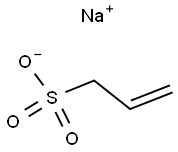Sodium allylsulfonate: Versatile Properties, Industrial Applications, and Hazards
Feb 5,2024
General Description
Sodium allylsulfonate is a white crystalline powder that is easily soluble in water and alcohols, but only slightly soluble in benzene. As a polymer surfactant, it contains double bonds at the α and β positions, which give it high reactivity. Sodium allylsulfonate is commonly used in the production of acrylic fibers as a third monomer, improving heat resistance, elasticity, spinnability, dyeing performance, and colorfastness. It also serves as an additive in nickel plating baths and a copolymerizable emulsifying agent in textile manufacturing. However, due to its potential toxicity and hazards, proper precautions must be taken when handling this chemical to prevent eye contact and minimize environmental contamination.
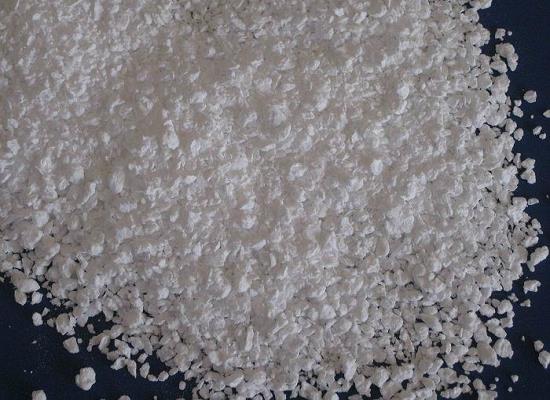
Figure 1. Sodium allylsulfonate
Versatile Properties
Sodium allylsulfonate is a white granular powder and a type of polymer surfactant. It contains double bonds at the α and β positions, which give it high reactivity. This chemical is commonly used as a third monomer in the production of acrylic fibers. Its addition to the fiber manufacturing process improves the heat resistance, elasticity, spinnability, and dyeing performance of the fibers. As a result, the fibers exhibit fast and vibrant color absorption, as well as strong colorfastness. In terms of its chemical properties, sodium allylsulfonate is a white crystalline powder. It is easily soluble in water and alcohols, but only slightly soluble in benzene. When its solution is heated for an extended period, it tends to undergo polymerization. However, the dry product exhibits good heat stability. Overall, sodium allylsulfonate is a versatile chemical with valuable properties that enhance the performance of acrylic fibers. Its solubility, reactivity, and heat stability make it a suitable component in various industrial applications, particularly in the textile industry. 1
Applications in Industrial Processes
Sodium allylsulfonate, also known as allylsulfonic acid sodium salt, is a versatile compound with various applications across different industries. One of its primary uses is in nickel plating baths, where it serves as an additive to improve the quality and properties of the plated nickel. This application is particularly relevant in industrial processes such as electroplating, where sodium allylsulfonate plays a key role in enhancing the performance of nickel plating baths. Furthermore, sodium allylsulfonate is employed as a copolymerizable emulsifying agent, especially in the production of dyeable acrylic fibers. When used in copolymerization with larger proportions of acrylonitrile, it contributes to the preparation of acrylic fibers that are readily receptive to dyes, thus facilitating the creation of vibrant and colorfast textiles. Overall, sodium allylsulfonate's dual functionality as a nickel plating bath additive and a copolymerizable emulsifying agent underscores its significance in industrial processes, particularly in the realms of electroplating and textile manufacturing. 2
Hazards and Risks
Sodium allylsulfonate is a chemical compound that requires careful handling and disposal due to its potential hazards. It has been classified as causing serious eye damage, making it necessary to take precautions to avoid contact with the eyes. It is also very toxic to aquatic life, both in terms of acute and long-term effects, meaning it can have harmful consequences for aquatic environments. In terms of human toxicity, an epidemiological survey conducted on workers exposed to allyl chloride, a component of sodium allylsulfonate, revealed potential health risks. The survey found that exposure to allyl chloride resulted in symptoms such as weakness in the extremities, numbness, and dizziness. Electroneuromyography tests showed a high prevalence of neuropathy, indicating damage to the peripheral nervous system. However, no significant abnormalities were noted in other organs. Given these findings, it is important to handle sodium allylsulfonate with caution, ensuring proper protective measures are taken to prevent eye contact and minimize environmental contamination. Additionally, regulatory guidelines and disposal practices should be followed to ensure safe and responsible use of this chemical. 3
Reference
1. Sodium allylsulfonate. National Center for Biotechnology Information (2024). PubChem Compound Summary for CID 23690996.
2. Sodium 2-propene-1-sulfonate. Haz-Map, Information on Hazardous Chemicals and Occupational Diseases, CAS Number: 2495-39-8.
3. Sodium prop-2-enesulphonate. European Chemicals Agency, EC / List no. 219-676-5.
- Related articles
- Related Qustion
- What is Sodium allylsulfonate used for? Oct 24, 2023
Sodium allylsulfonate is widely used in pharmaceutical, plating, and paint formulating industries.
trans-Cinnamaldehyde, derived from cinnamon bark, shows potential in combating antibiotic-resistant bacteria and enhancing antifungal treatments.....
Feb 5,2024APISodium Pyrithione, a versatile fungicide, is used widely in diverse industries, but caution is necessary to minimize potential risks.....
Feb 5,2024APISodium allylsulfonate
2495-39-8You may like
Sodium allylsulfonate manufacturers
- Sodium allylsulfonate
-
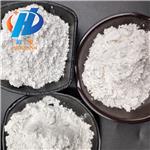
- $10.00/ kg
- 2024-04-24
- CAS:2495-39-8
- Min. Order: 1kg
- Purity: 99.8%
- Supply Ability: 10000ton
- Sodium allylsulfonate
-
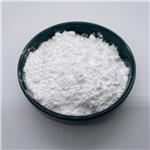
- $25.00/ BOX
- 2024-03-31
- CAS:2495-39-8
- Min. Order: 1BOX
- Purity: 99
- Supply Ability: 20TONS
- Sodium allylsulfonate
-
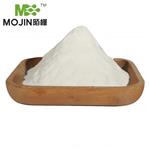
- $0.00 / 25KG
- 2023-06-28
- CAS:2495-39-8
- Min. Order: 1KG
- Purity: 99%
- Supply Ability: 50000KG/month




